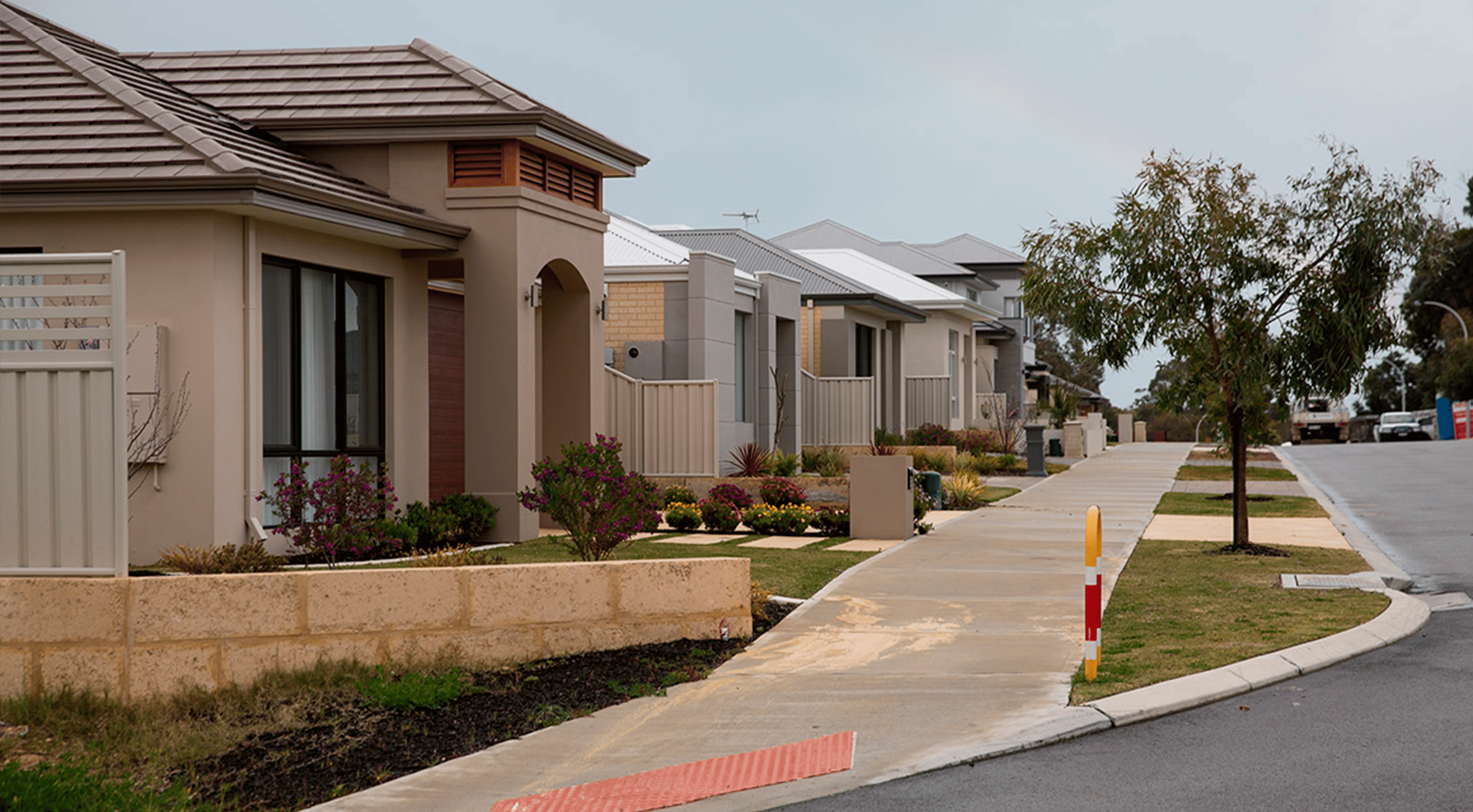
KEY POINTS
- Commonwealth Bank data has found that Millennials are the most active generation buying new investment properties
- CBA says the average property investor is 43 years old and has taken out a loan for just over $500,000
- The bank’s loan data also shows the inner city and outer-suburban areas in the major cities - particularly Sydney and Melbourne - are the top choice for investors despite media claims of a “rush to the regions”
New data from Australia’s largest bank has smashed several popular myths about property investors, including their age profile, where they are investing, their home ownership status, and whether they have needed financial assistance with their purchases.
Commonwealth Bank of Australia (CBA) has the largest mortgage loan book of any of the “Big 4” banks, so it’s a safe bet that their findings are replicated across the loan portfolios of most of Australia’s lenders.
Millennials rule
.png?width=8001&height=5563&name=Investor_Apr12_2024%20(1).png)
When it comes to buying investment properties, Millennials are the most active generation.
In 2023, 46% of new property investment loans written by CBA went to the cohort of people born between 1981 and 1996.
Unsurprisingly, this group also made up the largest cohort of first-home buyers at 56%.
CBA figures found that the average age of a property investor was 43, and the average loan size was $528,405.
Next came Gen X - the cohort of Australians born between 1965 and 1980, who accounted for 37% of all new investment property purchases throughout the calendar year.
Boomers–born between 1955 and 1964–accounted for only 9% of new investment property loans - less than one-fifth of the amount of investment loans taken out by Millennials.
Sole investors and “rentvestors”
Not only are Millennials the most active property investors, but it turns out many are “going it alone”.
“From our data, we can see that almost one-third of all millennial property investors actually purchased their investment property on their own,” says Michael Baumann, CBA's executive general manager of home buying.
Dr Baumann also points to ABS figures, which show property investors were the key drivers of new lending in Australia last year, with lending growth to investors reaching 18.5%.
Lending to first-home buyers rose by 13.2% while existing owner-occupiers saw a 3.4% increase in lending.
“Interestingly, what we continue to see from many Aussies is the inclination to ‘rentvest’, buying property where they can afford and then renting where they wish to live,” Dr Baumann says.
“Rentvesting gives Australians the chance to get their foot on the property ladder sooner rather than later and purchase a property in a lower cost area without having to give up the lifestyle they have become accustomed to when renting.”
Myth-busters
The Commonwealth Bank’s figures are fascinating, as they serve to “bust” several popular myths about property investors.
The key one is probably the constant refrain we hear and see in the media about Millennials being “locked out” of the property market.
It turns out that many have just simply ignored all that media “noise” and are getting on with buying a property they can afford.
It also appears that many would-be first-home buyers are opting to “rentvest” instead–buying an affordable investment property and renting where they want to live–close to work, friends, and family.
The high number of Millennials buying investment properties on their own also gives lie to the view that people can only get into the housing market if supported by a partner, a friend, or family members, namely the so-called “Bank of Mum and Dad.”
The CBA’s data also shatters a myth, popular with many young Australians, that rental property landlords are overwhelmingly older Australians who were able to enjoy the benefits of “cheap” housing in the past–housing which has now massively increased in value - to build their wealth.
There was a striking example of this recently, when an episode of the ABC Q&A television program centred on housing pitted a Boomer landlord couple against an audience of Millennials and Gen Z Australians, supposedly “locked out” of affordable housing.
Investment locations
.png?width=8333&height=5250&name=Postcodes_Apr12_2024%20(1).png)
Another myth the CBA data busts are the locations where property investors are putting their money.
While there’s been lots of talk about investors “rushing to the regions” and looking outside the major capitals for supposed “bargains”, most are sticking with a number of tried and true inner city and suburban areas–particularly in Sydney and Melbourne.
These are possibly the areas investors are familiar with, even if rental yields may not be as attractive as those in regional or interstate locations.
The CBA says, “The majority of the top-performing postcodes have proven to be consistently popular with investors for many years.”
In fact, the bank says its data from 2019 found three of the year’s top-performing investment postcodes were still at the top of the list in 2023.
The top investment destinations were inner-city Sydney (postcode 2000), the suburbs of Tarneit, Truganina, Hoppers Crossing, and Mount Cottrell in Melbourne’s western suburbs (postcode 3029), Angus, Berkshire Park, Box Hill, Gables, Grantham Farm, Maraylya, Riverstone, Marsden Park and Melonba in Sydney’s north-west (postcode 2765) and Craigieburn, Mickleham, Roxburgh Park, Donnybrook, Kalkallo and Woodstock in Melbourne’s northern suburbs (postcode 3064).
Interestingly, some of these outer suburbs are also popular with first-home buyers, suggesting that many investors may have bought their intended “forever home” but are currently renting it out as an investment property and are “rentvesting” themselves.
Inner-city Brisbane (postcode 4000) and Melbourne (postcode 3000) also rank highly on this investment target list, suggesting investors are targeting apartments in the centre of our capital cities.
The takeaway
The message from CBA’s data is clear.
If you actually follow the money, the myth of the cranky Boomer landlord who seems quite happy to lock younger Australians out of the housing market for good just doesn’t stack up.
Property investors are young, savvy, motivated, and prepared to be flexible. They are pursuing strategies like “rentvesting” to secure their long-term wealth and housing goals.
Stay Up to Date
with the Latest Australian Property News, Insights & Education.




.png?width=292&height=292&name=Copy%20Link%20(1).png)
 SIGN UP FOR FREE NEWSLETTER
SIGN UP FOR FREE NEWSLETTER
%20(1).png)

.png)





.jpg?width=1920&height=1080&name=Warning%2c%20You%20Might%20Be%20Facing%20Higher%20Taxes%20Soon%20(1).jpg)





.png?width=1920&height=1080&name=Rate%20Drops%20Signal%20BIGGEST%20Property%20Boom%20in%20DECADES%20(1).png)

.jpg?width=1920&height=1080&name=Labor%20vs%20Liberal%20These%20Housing%20Policies%20Could%20Change%20the%20Property%20Market%20Forever%20(1).jpg)
.jpg?width=1920&height=1080&name=QLD%20Slashes%20Stamp%20Duty%20Big%20News%20for%20Investors%20%26%20Home%20Buyers%20(1).jpg)
.jpg?width=1920&height=1080&name=Trump%20Just%20Slapped%20Tariffs%20%E2%80%93%20Here%E2%80%99s%20What%20It%20Means%20for%20Australia%20(1).jpg)
.jpg?width=1920&height=1080&name=Federal%20Budget%202025%20More%20Debt%2c%20No%20Housing%20%E2%80%93%20Here%E2%80%99s%20What%20You%20Need%20to%20Know%20(1).jpg)
.jpg?width=1920&height=1080&name=Australias%20Housing%20Crisis%20is%20about%20to%20get%20MUCH%20Worse%20(New%20Data%20Warns).jpg)
%20(1).jpg?width=1920&height=1080&name=Australias%20RENTAL%20CRISIS%20Hits%20ROCK%20BOTTOM!%20(2025%20Update)%20(1).jpg)
%20(1).png?width=1920&height=1080&name=Is%20Adelaide%20Still%20a%20Good%20Property%20Investment%20(2025%20UPDATE)%20(1).png)
.jpg?width=1920&height=1080&name=RBA%20Shocks%20with%20Rate%20Cuts!%20What%E2%80%99s%20Next%20for%20Property%20Investors%20(1).jpg)
%20(1).jpg?width=1920&height=1080&name=I%20Predict%20The%20Feb%20Rate%20Cut%20(My%20Price%20Growth%20Prediction)%20(1).jpg)
.png?width=1920&height=1080&name=Why%20Property%20Prices%20Will%20Rise%20in%202025%20Market%20Predictions%20(1).png)
.jpg?width=1920&height=1080&name=Why%20Investors%20Are%20Choosing%20Apartments%20Over%20Houses%202%20(1).jpg)
.jpg?width=1920&height=1080&name=Why%20Rate%20Cuts%20Will%20Trigger%20A%20Property%20Boom%20(1).jpg)
.jpg?width=1920&height=1080&name=Retire%20On%202Million%20With%20One%20Property%20(Using%20SMSF).jpg)
.jpg?width=1920&height=1080&name=4%20Reasons%20Why%20You%20Should%20Invest%20in%20Melbourne%20Now%20(1).jpg)
%20(1).jpg?width=1920&height=1080&name=Old%20Property%20vs%20New%20Property%20(Facts%20and%20Figures%20Revealed)%20(1).jpg)
%20(1).jpg?width=1920&height=1080&name=Will%20The%20New%20QLD%20Govt%20Create%20a%20Property%20Boom%20or%20Bust%20(My%20Prediction)%20(1).jpg)
%20Scott%20Kuru%20(1).jpg?width=1920&height=1080&name=Inflation%20Hits%20Three-Year%20Low%20(Will%20RBA%20Cut%20Rates%20Soon)%20Scott%20Kuru%20(1).jpg)
.jpg?width=1920&height=1080&name=How%20to%20Buy%20Investment%20Property%20Through%20SMSF_%20The%20Ultimate%20Guide%20(1).jpg)
.jpg?width=1920&height=1080&name=Victoria%20Slashes%20Stamp%20Duty%20Melbourne%20Set%20to%20Boom%20Scott%20Kuru%20(1).jpg)
.png?width=1571&height=861&name=Are%20Foreign%20Buyers%20Really%20Driving%20Up%20Australian%20Property%20Prices%20(1).png)
.jpg?width=1920&height=1080&name=The%20Single%20Factor%20That%20Predicts%20Property%20Growth%20Regions%20(1).jpg)
%20Scott%20Kuru%20(1).jpg?width=1920&height=1080&name=My%20Prediction%20On%20Rates%20%26%20Negative%20Gearing%20(Market%20Crash)%20Scott%20Kuru%20(1).jpg)

-1.png?width=1920&height=1080&name=Major%20Banks%20Cut%20Rates%20Will%20RBA%20Follow%20Suit%20(Sept%20Rate%20Update)-1.png)
%20Scott%20Kuru-1.png?width=1920&height=1080&name=Rate%20Cut%20Coming%20What%20New%20Zealands%20Move%20Means%20for%20Australia%20(Sept%20Prediction)%20Scott%20Kuru-1.png)
%20(1).jpg?width=1920&height=1080&name=Buy%20when%20the%20interest%20rates%20are%20high!%20(Why%20you%20must%20buy%20now!)%20(1).jpg)
.jpg?width=1920&height=1080&name=Carms_Revised%20Taxes%20Due%20Aug%209%20YT%20Thumbnail02%20(1).jpg)
.jpg?width=1920&height=1080&name=Carms_Too%20Little%20Too%20Late%20Aug%207%20YT%20Thumbnail01%20(1).jpg)









.jpg?width=1920&height=1080&name=Carms_Rate%20Drop%20In%20July%20Jun%2010%20YT%20Thumbnail02%20(1).jpg)
.jpg?width=1920&height=1080&name=Carms_Own%20a%20Property%20V6%20Jun%205_YT%20Thumbnail%20(1).jpg)









.png?width=1920&height=1080&name=Artboard%201%20(3).png)






.jpg?width=1920&height=1080&name=YT%20thumbnail%20%20(1).jpg)

